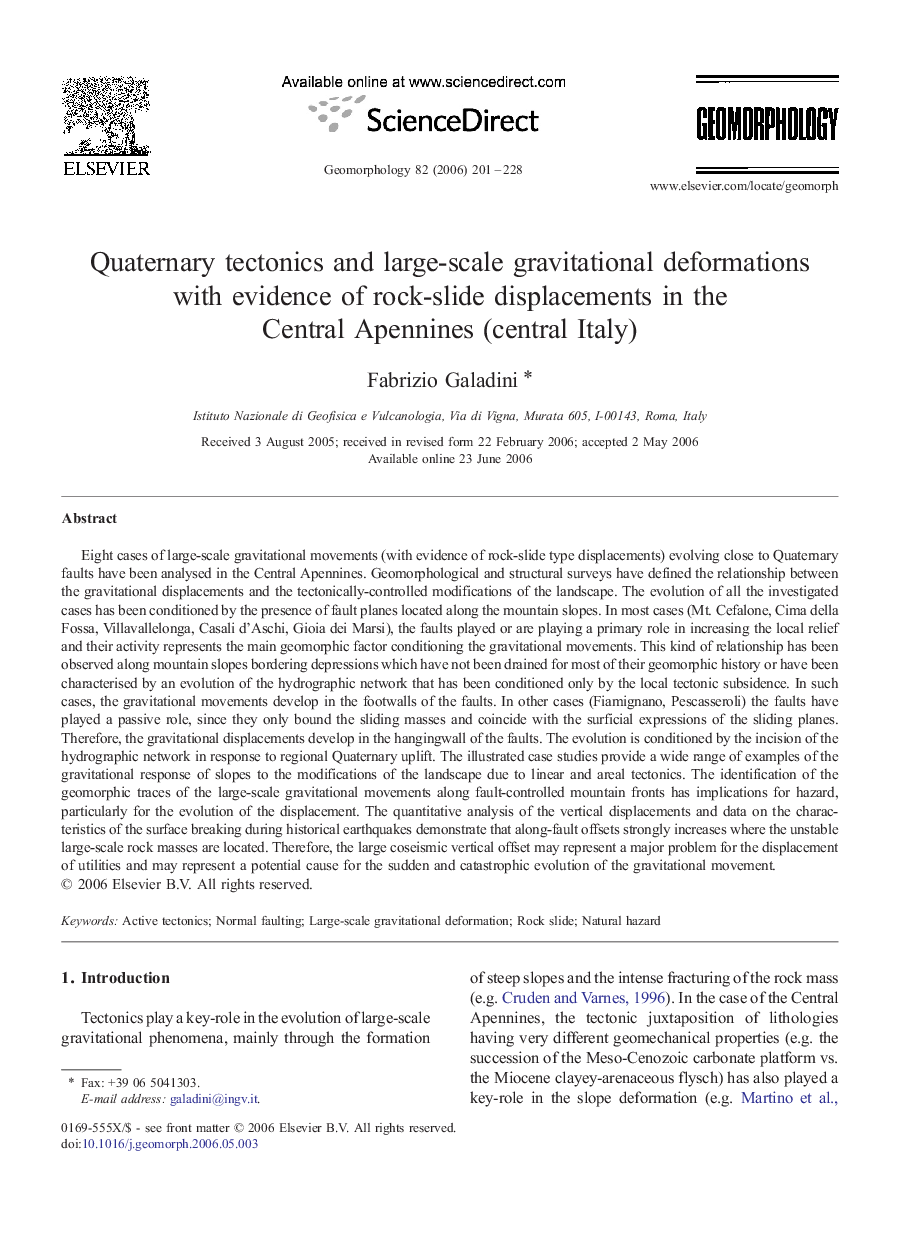| Article ID | Journal | Published Year | Pages | File Type |
|---|---|---|---|---|
| 4687289 | Geomorphology | 2006 | 28 Pages |
Eight cases of large-scale gravitational movements (with evidence of rock-slide type displacements) evolving close to Quaternary faults have been analysed in the Central Apennines. Geomorphological and structural surveys have defined the relationship between the gravitational displacements and the tectonically-controlled modifications of the landscape. The evolution of all the investigated cases has been conditioned by the presence of fault planes located along the mountain slopes. In most cases (Mt. Cefalone, Cima della Fossa, Villavallelonga, Casali d'Aschi, Gioia dei Marsi), the faults played or are playing a primary role in increasing the local relief and their activity represents the main geomorphic factor conditioning the gravitational movements. This kind of relationship has been observed along mountain slopes bordering depressions which have not been drained for most of their geomorphic history or have been characterised by an evolution of the hydrographic network that has been conditioned only by the local tectonic subsidence. In such cases, the gravitational movements develop in the footwalls of the faults. In other cases (Fiamignano, Pescasseroli) the faults have played a passive role, since they only bound the sliding masses and coincide with the surficial expressions of the sliding planes. Therefore, the gravitational displacements develop in the hangingwall of the faults. The evolution is conditioned by the incision of the hydrographic network in response to regional Quaternary uplift. The illustrated case studies provide a wide range of examples of the gravitational response of slopes to the modifications of the landscape due to linear and areal tectonics. The identification of the geomorphic traces of the large-scale gravitational movements along fault-controlled mountain fronts has implications for hazard, particularly for the evolution of the displacement. The quantitative analysis of the vertical displacements and data on the characteristics of the surface breaking during historical earthquakes demonstrate that along-fault offsets strongly increases where the unstable large-scale rock masses are located. Therefore, the large coseismic vertical offset may represent a major problem for the displacement of utilities and may represent a potential cause for the sudden and catastrophic evolution of the gravitational movement.
